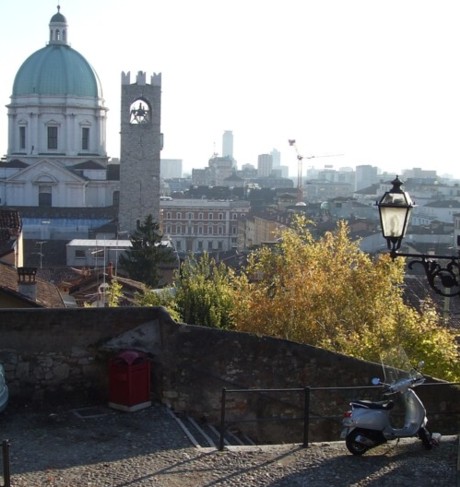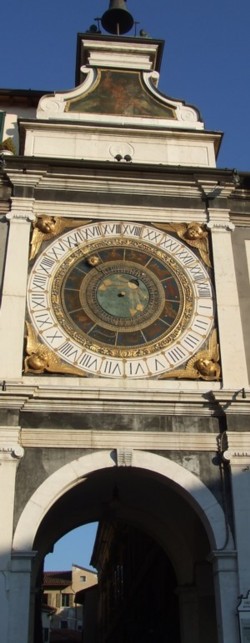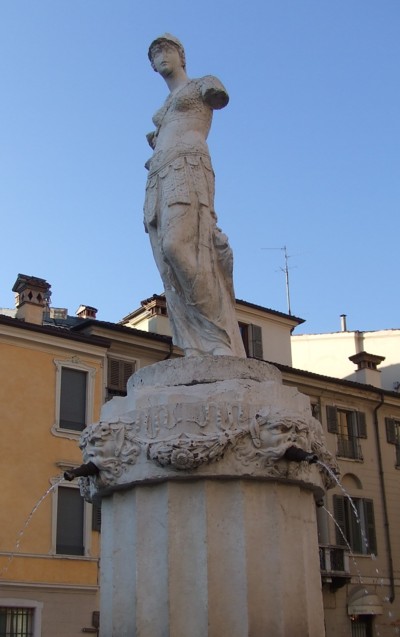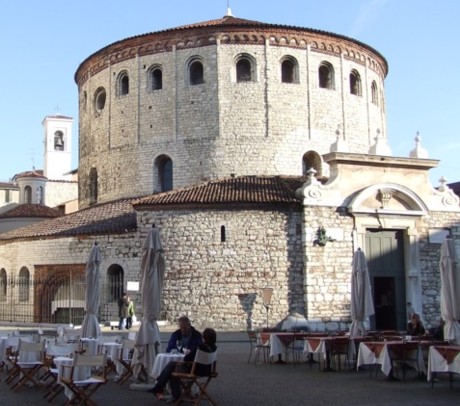About Brescia
Brescia (pronounced Bresh-ya) is a town in the north of Italy, located in the region of Lombardy between Milan and Verona. It’s a historic city with good public transport links which makes a good jumping-off point for Lakes Garda and Iseo.
An ex-pat once told me ‘Brescia is brilliant! It’s a lovely town but there are no tourists.’ The town does get visitors, but it’s not on the main tourist trail despite its little budget airport. Its main trouble is its vicinity to so many lovely destinations: Lakes Iseo and Garda, Verona (Ryanair call the airport ‘Verona Brescia’) and Vicenza. But like Bergamo (‘Milan Bergamo’) and Treviso (‘Venice Treviso’) Brescia is worth visiting in its own right: perhaps in passing or in combination with one of the more traditional holiday destinations nearby.
First impressions of Brescia may be mixed – when we visited we were disconcerted to find that the usual vaguely dodgy loiterers who hang around near railway stations were augmented by several beggars, and the seediness seemed to spread a long way into the surrounding streets. Brescia has grown larger and more industrialised in recent decades, with a new commercial district outside the historic centre, called Brescia Due. However, along with business prosperity has come a wave of immigration and new social problems. It’s important to remember that although the central historic area is fairly compact, this is a large modern city with all that that entails.
Find and book hotels. With location maps and guest reviews.
Tourist attractions

The centre of Brescia, with its historic squares and lanes, is manageable on foot; a guidebook or map is useful for getting your bearings and establishing the chronology of this ancient city. Roman Brescia was called Brixia, a settlement that had already existed for hundreds of years, founded by Gauls. The Roman Forum was situated beneath the earlier hill stronghold along what is now Via Musei (but was the Decumanus Maximus). The Capitolium here, in modern-day Piazza del Foro, was the heart of town; a temple built by the Emperor Vespasian over earlier Republican-era buildings was discovered here in the nineteenth century, and has been partially reconstructed. Alongside is the town’s Roman theatre. Further down Via Musei is the main town museum, the Museo della Città or Museo di Santa Giulia. The museum houses an extensive collection of local exhibits, with archaeological finds and collections from all periods of Brescia’s past. It’s housed in a monastery complex, Santa Giulia, which has a long and rich history and incorporates the Church of San Salvatore, begun by the Lombards in the eighth century.
Most Italian towns, when they felt the need for a grand new cathedral, simply amended or replaced their existing duomo. In Brescia, however, the new church was built alongside the old one, so visitors can visit an unusual example of an earlier church. The historic duomo, the Duomo Vecchio (or Rotonda) in Piazza Paolo VI is totally dwarfed by its imposing successor, the Duomo Nuovo, but the older of the two churches is by far the more interesting. The site has a long history; the building dates to the end of the eleventh century but is built on the site of an earlier basilica, which in turn was founded on Roman buildings. It’s an unusual circular Romanesque church, with a calm atmosphere, some lovely decoration and chances to glimpse mosaics left from the earlier buildings on the site.
When you’re exploring, you’ll undoubtedly pass through Piazza della Vittoria, a large Fascist-era square (designed by Marcello Piacentini, the architect behind the EUR district of Rome). It’s a striking example of 1930s architecture but it’s unloved and used mainly as a car park. The town’s older squares are much more appealing and lively, as are the nearby pedestrian shopping streets.
Piazza della Loggia is the prettiest square, and the seat of local administration. It’s a good first stop for tourists as it’s the location of the town’s main tourist information office (open Monday-Friday 9:30am-12:30pm and 2pm-5:30pm; Saturdays 9:30am-1pm). The Renaissance Palazzo della Loggia, the town hall, was finished in the late sixteenth century with input from various architects including Jacopo Sansovino and Andrea Palladio. The clock tower (Torre dell’Orologio) here is reminiscent of the famous one in Venice, even down to the two crowning figures striking a bell (Venice: Torre dell’Orologio).

From Via dei Musei, winding lanes wind up to the Colle Cidneo hill, now a wooded park, which shadows the oldest part of the town. This was the site of the earliest settlement, dating back to the Bronze Age. On the summit is the town’s Castello, a castle built on Roman foundations, now housing museums of weaponry and of the Italian Risorgimento.
Brescia’s best art can be admired in a gallery to the south-east of the centre, the Pinacoteca Tosio Martinengo. Highlights include works by Raphael, Lorenzo Lotto and Tintoretto, as well as many local artists.

It’s worth noting that Brescia’s museums give discounted entry to the holders of tickets for affiliated local attractions, including the Vittoriale and Botanic Garden at Gardone Riviera and the Museo Poldi Pezzoli in Milan (one reduced admission per ticket). There are also reduced prices for the young and for pensioners. Check opening times when planning a trip; the official website (see links panel) will give details of any closures.
Arriving in Brescia
Brescia has its own small airport served by a few budget flights (Ryanair) from London Stansted in the UK. It’s called Aeroporto Gabriele d’Annunzio, and is located at Montichiari, to the south-east of town, near Lake Garda. A bus service (Aerobus) connects the airport with Brescia bus station (just outside the railway station), and is scheduled to coincide with Ryanair flights: read more about Brescia Airport. There are also direct buses to Brescia from Milan Bergamo Airport.
Brescia is also well-connected by train, being on the main railway line which runs Milan – Brescia – Verona – Vicenza – Padua – Venice. The town is a couple of hours by train from Venice and 45 minutes from Verona. A small branch line runs to Lake Iseo. The station is a decent size with a few shops and even a hairdressers if you fancy a quick trim between trains. There’s a good self-service cafe. The bus station – autostazione – is just outside, to the right. In front of the station are local bus stops and a handy map of the town to help tourists orient themselves and set off into the centre (manageable on foot in around 15 minutes). There are a couple of newsagents which sell bus and regional train tickets, and also tickets for the airport coach to Bergamo Airport. At the time of writing there is no left-luggage facility.
Local trains to Lake Iseo leave from a separate part of the station at the end of platform 1. The three little platforms here, 1, 2 and 3 are differentiated from the main station by the addition of the word ‘ovest’ (west). There is a ticket office by the platforms for this regional railway line. These trains run up the eastern shore of Lake Iseo, through Iseo (about 35 minutes away) and Sulzano (45 minutes).
External links
